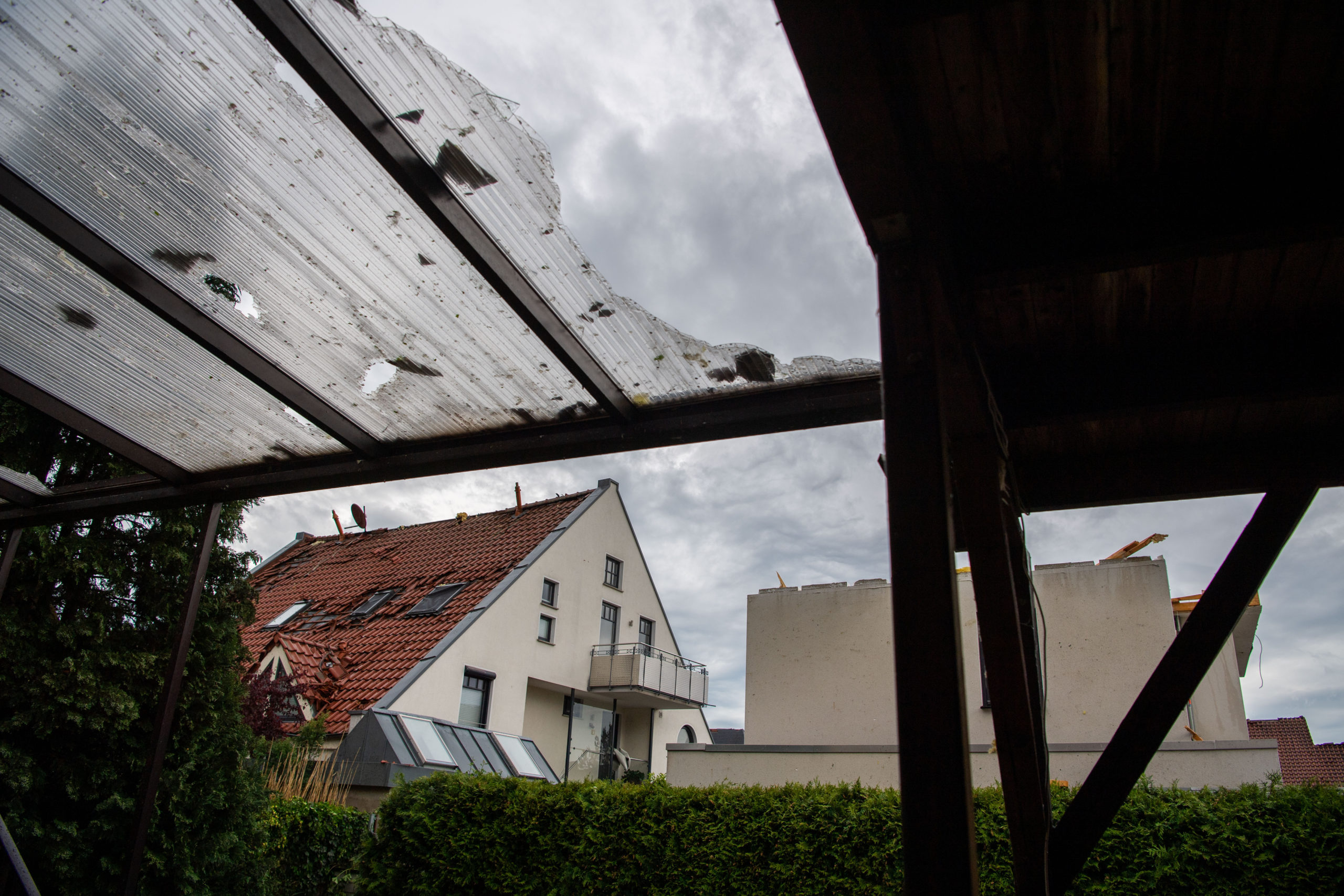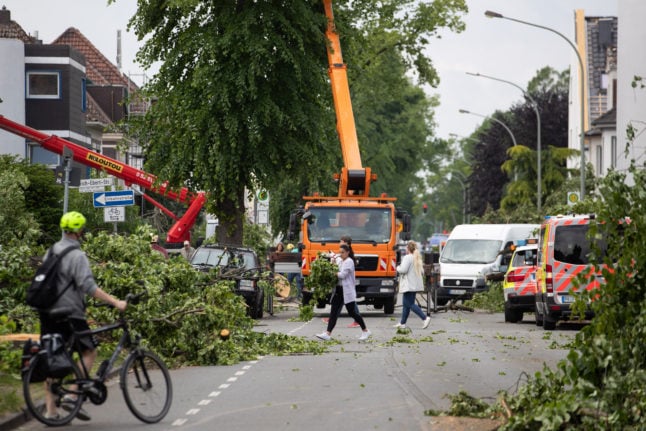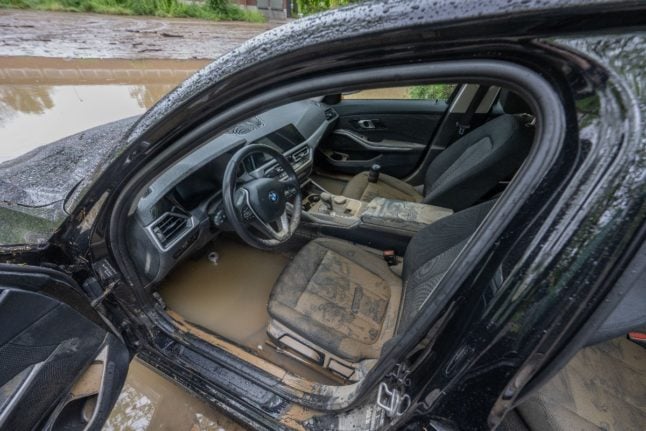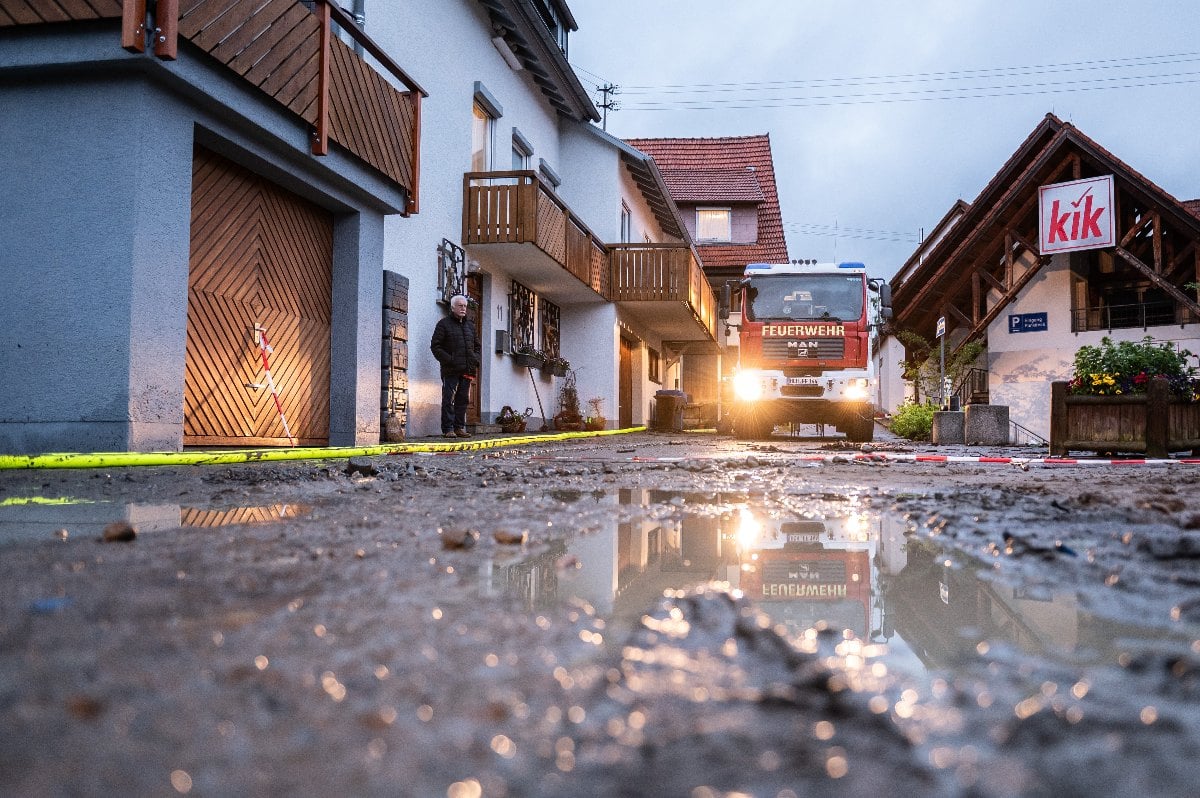A severe weather warning was issued on Sunday by the German Weather Service (DWD), who cautioned residents in western and southwestern regions of the country that fierce gusts of wind, hailstones and heavy rain could once again be on the horizon.
A second tornado could “not be ruled out” in the southwestern regions of the country, DWD warned.
North Rhine-Westphalia, Hesse and Rhineland-Palatinate, were struck by heavy rain and hailstorms and strong gusts of wind throughout the afternoon.
However, the worst of the thunder and hailstorms warnings were for the state of Baden-Württemberg.
Here, DWD issued a Stage 3 weather warning – the second highest possible. Severe thunderstorms with gale-force winds at speeds of up to 110km per hour were forecast, with up to 50 litres of rain per square metre falling in a short space of time.
According to the meteorologists, the storms are expected sweep across to the eastern regions of the country and ease off in the evening.
Erste #Gewitter sind bereits unterwegs. Der Schwerpunkt liegt aber am Nachmittag und Abend. Dann drohen in den schraffierten Gebieten (das ist die Vorabinformation) #Unwetter mit teils orkanartigen #Böen, heftigem #Starkregen und größerem #Hagel. /V pic.twitter.com/zIa5TETOal
— DWD (@DWD_presse) May 23, 2022
The storms and severe weather warnings came days after the city of Paderborn in North Rhine-Westphalia was hit by a devastating tornado.
According to the local fire brigade, 43 people were injured in the storm, with 13 of them needing to be hospitalised and one person reportedly fighting for their life.
Railway services were cancelled across many parts of the west over the weekend, but resumed again on Monday.
Air travel in some parts of the country was also affected, with Frankfurt Airport in the central state of Hesse saying there was disruption to flights on Friday.
Videos posted on social media depicted the strongest part of the tornado tearing through the city, ripping trees up by their roots.
The damage to infrastructure and buildings caused by the storm is estimated to be in the millions.
Schools remain closed
As of Monday, several schools and nurseries remained closed in both Paderborn and nearby Lippstadt due to fears that the buildings couldn’t be safely entered.
In the small town of Lippstadt alone, five nurseries and seven schools were closed for repairs on Monday, with administrators unable to say when they would reopen their doors.
“Given the extent of the damage we see at the various locations, it is currently unthinkable that classes can be held there in the next few days,” said Mayor Arne Moritz (CDU).
In Paderborn, meanwhile, drones were exploring five closed school buildings to check whether there was a risk of damaged roofs imploding. The streets where the schools are located have been closed off to the public and the police are believed to be patrolling outside to stop anyone entering.
READ ALSO: Tornado in western Germany injures dozens

More frequent tornadoes?
Tornadoes aren’t infrequent in Central Europe, but recently appear to be gaining in frequency and intensity, which experts suggest could be a result of climate change.
In June 2021, a deadly tornado swept through several villages in the Czech Republic near the Slovakian and Austrian borders, killing six people and injuring a further 200.
At time, climatologists pointed out that until 2020, the Czech Republic only saw a handful of tornadoes each year – and most of them were relatively mild.
Speaking to WDR on Sunday, climate researcher Dr. Mojib Latif drew a direct parallel between warmer temperatures and more violent and regular storms.
#Paderborn #Tornado #Scherwind
Ich pack noch paar Bilder hier drunter pic.twitter.com/MjDr9z5UIQ— PrimeCHRISS 🇺🇦 (@PrimeCHRISS) May 20, 2022
“In Germany there are approximately between 20 and 40 tornadoes per year,” he told the regional media outlet. “We have to reckon with that. As the climate gets warmer and thunderstorms become more violent, the frequency of tornadoes will also increase.”
However, some experts have been more cautious about drawing a direct link.
“That simply cannot be determined at the moment,” meteorologist Jürgen Schmidt told RND.
Schmidt thinks the perception that tornadoes have increased in recent years could have a slightly more prosaic explanation.
The fact that people are able to record them on their smartphones and share these images more widely could contribute to this impression, he said.
READ ALSO: EXPLAINED: How the climate crisis is hitting Europe hard




 Please whitelist us to continue reading.
Please whitelist us to continue reading.
Member comments